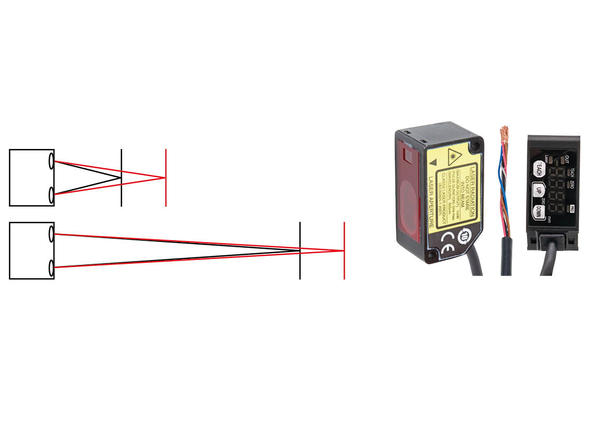Extremely high repeat accuracy
Sensors that work according to the triangulation method, such as those of the PT44 product range, impress with their extremely high accuracy, as triangulation is one of the most precise methods for optical distance determination.
The light emitted by the transmitter and reflected by an object hits the receiver. This essentially consists of a converging lens and the self-test sensor element, which bundles the impinging light waves and transmits them to the photoelectric sensor element. The position of the impinging light beam depends on the distance between the device and the object and thus on the angle of reflection. The object distance can therefore be precisely determined and converted into a distance-proportional voltage (0 ... 5V) or current signal (4 ... 20mA). The switching point of the switching output is also freely programmable within the measuring range.
With this method and a very fine class 1 laser light, the sensors of the PT44-series sensors achieve first-class repeat accuracy. Expressed in figures, this is the case with the PT440300 (measuring range 25 ... 35mm) is 10μm and for the PT440304-series (measuring range 200 ... 600mm) at 800μm. In relative terms, this is 0.1% and 0.4% respectively via the entire measuring range.
For physical reasons, the accuracy in the area close to the sensor is always slightly better, as the angular difference for a certain change in distance is significantly greater at the start of the measuring range than at the end of the measuring range.
In order to still be able to detect small objects from greater distances with the best possible precision, ipf electronic has expanded the sensor series with the PT440306 sensor. Using an alternative measuring method, time-of-flight measurement, a relative repeat accuracy of 0.33% is achieved via the entire operating distance of 250 to 3000mm. As with the other devices, parameterization is carried out via three integrated diffuse reflection sensors, the menu items and the measurement results can be read on the 4-digit 7-segment display.
